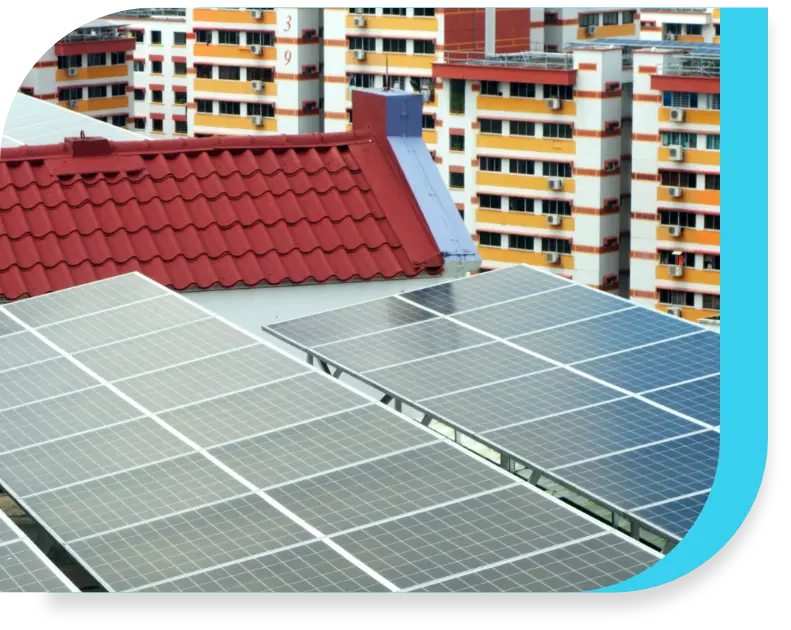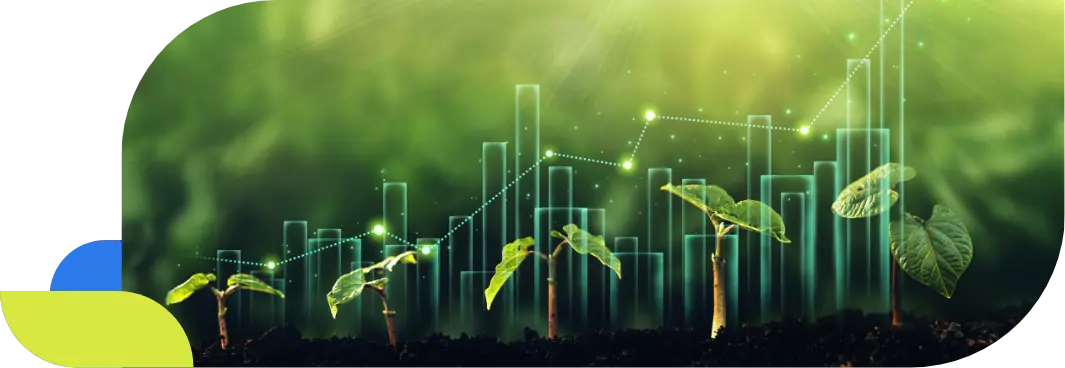The grid, the growth and the game plan
From our nation’s conception until the early 2000s, our growth was solely powered by fuel oil1. At the turn of the millennium we began switching to imported natural gas, bringing us to today, where 95% of our energy is being produced from natural gas1. But as we strive on in our ambitious journey towards net-zero emissions, the transition to yet cleaner energy sources continues, as generating electricity still accounts for about 40% of total carbon emissions2.
This transition is paramount, now more than ever. According to the Energy Market Authority (EMA), the national grid’s peak demand is predicted to rise every year over the next five years3, making it crucial that Singapore incorporates different sources of energy into the mix to reduce its carbon footprint. Besides taking steps to ensure that the day-to-day operations of the grid runs optimally and reliably, SP Group’s efforts towards its green transition include exploring various energy alternatives, many of which also hinge on embracing new technologies.

Sunshine remains Singapore’s best source of renewable energy1. Currently, we stand as one of the most solar-dense cities in the world, with 1.17 gigawatt-peak (GWp) of solar deployment as of 2023 – more than halfway to our target of 2 GWp by 20301.
At SP, we provide solutions that enable organisations to make full use of the sun for their decarbonisation efforts. By helping large-scale organisations such as Seatrium Ltd and AIMS APAC REIT deploy their rooftop solar photovoltaic (PV) systems, we enable them to meet their decarbonisation responsibilities and save on energy costs too.
On top of that, we play our part by installing rooftop solar panels at 37 of our electricity substations by 2025. With a total installed capacity of 15.7 megawatt-peak (MWp), these solar panels will deliver up to 21,000 megawatt-hour (MWh) of renewable electricity into Singapore’s grid annually – enough to power more than 4,500 four-room Housing Development Board (HDB) flats for a year.
According to Singapore’s Green Plan 2030, the year 2035 should see 30% of projected energy being imported from regional power grids. By tapping into clean energy sources beyond our borders, we can significantly reduce our carbon footprint while enhancing our energy security. This shift signals the need to adopt technologies such as High Voltage Direct Current (HVDC) and High Voltage Alternating Current (HVAC) systems to facilitate the transmission of green electrons from resource-rich markets to Singapore shores. And as such, SP is actively collaborating with various agencies and importers to bolster technological capabilities in preparation for future electricity imports. Singapore first began importing 100 megawatts (MW) hydropower from Laos in June 2022, via the power grids in Thailand and Malaysia2. In September of the same year, Malaysia began supplying electricity to Singapore through the same collaboration, raising the potential inflow to as much as 200 MW2. To date, the EMA has granted conditional approval to several projects that aim to import a combined 5,600 MW of low-carbon electricity from Cambodia, Indonesia and Vietnam2. And it has also given the go-ahead for a project to import solar-generated electricity from Australia via a 4,300-km undersea cable2.
At the same time, Singapore is actively exploring other new energy technologies for the long term, such as hydrogen, geothermal as well as Carbon Capture and Storage.
Based on Singapore’s national hydrogen strategy announced by the Ministry of Trade and Industry Singapore, hydrogen can potentially supply up to 50% of Singapore’s projected electricity demand by 2050. Therefore, in a future-forward step, Singapore Institute of Power and Gas (SIPG), the training arm of SP Group, developed a two-day FUSION course to upskill SP’s engineering workforce.Through this course, workers learnt more about how hydrogen can be safely tapped as a renewable energy source and they attained a broader understanding of the opportunities for hydrogen in Asia.

SP also teamed up with the EMA to launch a groundbreaking ice thermal Energy Storage System (ESS) at the George Street Substation, marking the first time the two organisations will implement an ice thermal storage facility outside of a district cooling plant. The pilot project, part of the substation’s renewal works, is set to be completed in the third quarter of 2026 and will optimise space utilisation within the substation. The ESS will contribute up to 1,500 refrigeration tonne-hour (RTH) of ice thermal energy to SP’s Marina Bay district cooling network, resulting in the potential curtailment of up to 2 megawatts (MW) of electrical load. SP also currently operates a 2.4 MWh ESS and Woodlands substation providing regulation services.
Besides exploring green energy alternatives, SP Group also helps organisations lower their consumption. Our Sustainable Energy Solutions enable these organisations to transit, monitor and lower their energy usage as part of the larger decarbonisation effort.
SP Group is Singapore’s largest district cooling operator. We design, build and operate district cooling systems for customers across the region, including Singapore’s Marina Bay District Cooling Network, the world’s largest underground district cooling network that serves 28 buildings in the area. This approach in cooling enables large scale cooling at significantly lower energy consumption and carbon footprint.
SP Group has been pioneering electric vehicle (EV) charging since 2018, before the nation-wide push for vehicle electrification. Today, we are building Singapore’s largest fast-charging network for electric vehicles (EVs), and working with partners to roll out a pervasive network of charging points to meet Singapore’s EV charging needs and catalyse the nation’s decarbonisation drive.
GET® is an innovative suite of digital solutions that helps improve energy efficiency, simplify cost optimisation and enhance occupant well-being. One of its solutions, GET® Insights, gives an integrated view of utilities consumption, by extracting data from existing management systems and meters, or from additional smart sensors. These insights enable better informed decisions on optimising energy consumption and costs.
When it comes to air-conditioning, GET® Control provides another solution. It is an innovative micro-climate control system that works with smart sensors, Artificial Intelligence (AI) and the Internet of Things (IoT) to predict ambient weather conditions, occupancy patterns and automatically optimises energy usage accordingly.
The GET® suite of solutions works with existing systems, as well as our other renewable energy and district cooling solutions to provide a holistic approach towards energy efficiencies that are better for consumers, for the grid, and for a more sustainable future.
Read SP’s Sustainability Report for how our initiatives can support you, or Contact us to find out more.
Footnotes
110 things you should know about Singapore’s energy story, www.ema.gov.sg
2Singapore looks to Asean neighbours for green power to meet carbon goals, Straits Times, November 2024
3About 1 in 2 households in EMA pilot cut energy usage in September when prompted, Straits Times, November 2024

